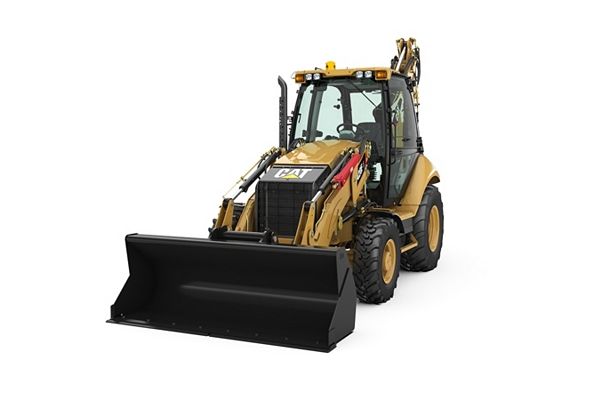Renting Out Vs. Acquiring Building Tools: Making the Right Selection for Your Task
When beginning on a construction project, one of the important choices that forecast supervisors and stakeholders encounter is whether to rent or get construction devices. The decision hinges on different factors such as cost considerations, project duration, tools maintenance, scalability, danger, and adaptability monitoring.
Cost Considerations
When evaluating the economic facet of renting versus buying building and construction devices, the long-term expenditures and in advance costs should be carefully taken into consideration. Renting devices commonly needs lower preliminary repayments contrasted to buying, making it an appealing alternative for temporary tasks or specialists with budget plan restraints. Leasing eliminates the need for huge capital outlays and decreases the monetary risk linked with devices possession, such as upkeep and devaluation expenses. Nonetheless, over time, continually renting tools can collect greater costs than purchasing, especially for extended projects.
On the various other hand, acquiring building and construction tools entails greater upfront costs but can result in lasting financial savings, specifically for lasting tasks or frequent users. Ultimately, the choice in between buying and renting construction equipment hinges on the task's duration, frequency of use, budget plan factors to consider, and lasting economic goals.
Project Duration

Conversely, for long-term projects or continuous building and construction work, buying devices might be the much more economical choice. Buying tools can bring about cost financial savings in the future, particularly if the equipment will be often utilized. Furthermore, possessing devices offers a feeling of control over its schedule and enables personalization to fit specific task demands.

Devices Maintenance
Given the important function job period plays in figuring out the most cost-efficient method between leasing and buying building tools, the emphasis now shifts towards checking out the necessary element of tools maintenance. Proper upkeep is vital for making certain the optimum efficiency and durability of construction equipment. Renting out equipment commonly comes with the benefit of having actually well-kept machinery supplied by the rental business. This can relieve the concern of maintenance jobs from the task owner or specialist, conserving effort and time. On the various other hand, having devices needs a positive approach to upkeep to stop malfunctions, make certain safety and security, and prolong the devices's lifespan. Routine examinations, maintenance, and prompt fixings are needed to maintain owned tools in top functioning problem. Consider upkeep expenses when making a decision in between buying and renting, as neglecting maintenance can result in costly repair work, downtime, and project hold-ups. Eventually, a well-kept building equipment fleet, whether rented out or possessed, is vital for the successful and efficient completion of construction jobs.
Flexibility and Scalability
In the world of building devices administration, the facet of flexibility and scalability holds considerable importance for job performance and resource application. Opting to rent out building equipment provides a high level of adaptability as it permits the quick adjustment of devices types and quantities based on the evolving demands of a task. Leasing allows service providers to access a variety of customized devices that might be required for details tasks without the long-lasting commitment of ownership. This adaptability is particularly advantageous for jobs with differing needs or unpredictable durations (scissor lift rental).
In addition, scalability, one more critical factor, is click here now inherently connected to adaptability. Renting building and construction devices offers the benefit of quickly scaling procedures up or down as job needs change. Specialists can rapidly include or exchange tools to match the job's changing needs without the restraints of having assets that might end up being underutilized or obsolete. This capability to scale sources effectively can lead to price savings and enhanced task timelines, making renting out a desirable choice for jobs requiring versatility and receptive source allocation.
Risk Management
Effective risk monitoring in construction tools procedures is critical to ensuring task success and mitigating potential monetary losses. Construction tasks inherently involve different risks, such as equipment malfunctions, accidents, and task hold-ups, which can considerably impact the task timeline and budget. By thoroughly thinking about the dangers connected with owning or leasing construction equipment, task supervisors can make educated choices to lessen these potential dangers.
Renting out building equipment can provide a level of risk reduction by transferring the obligation of maintenance and repair work to the rental company. This can decrease the monetary worry on the project proprietor in situation of unforeseen devices failings (heavy equipment rental). Additionally, renting provides the flexibility to access customized devices for specific task stages, minimizing the threat of having underutilized machinery
On the other hand, having construction equipment offers a feeling of control over its usage and upkeep. Nonetheless, this also indicates birthing the complete duty for repairs, maintenance expenses, and devaluation, raising the economic threats related to equipment ownership. Careful risk analysis and factor to consider of factors such as job period, devices application, and upkeep demands are vital in establishing one of the most appropriate choice for reliable risk administration in building and construction jobs.
Verdict
To conclude, when determining in between acquiring and renting out construction tools, it is necessary to consider expense, task duration, equipment maintenance, danger, flexibility, visit and scalability administration. Each aspect plays a critical role in figuring out one of the most suitable choice for the task available. By heavy duty hydraulic door lift thoroughly evaluating these aspects, task managers can make an informed decision that aligns with their budget, timeline, and total job goals.
